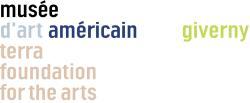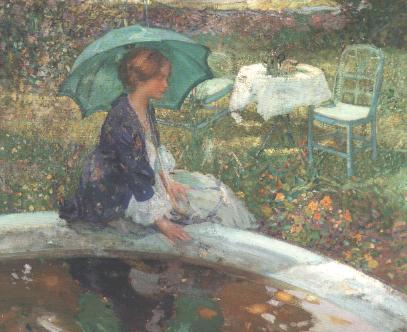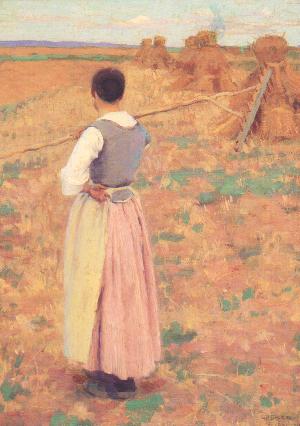
T h e C o l o n y o f A m e r i c a n A r t i s t s
En Francais :
Colonie artistes americains
The Colony of American Artists
In fact, in the 1880s and 1890s, virtually thousands of American students were invading Paris and its art schools. Attracted by a more liberal curriculum than what was available in the United States, and aspiring to compete on an international scale, the American artists' success in assimilating the traditional French training is reflected by the number of entries and awards they received in the annual Parisian Salons. |
|
|
But while Paris functioned as a stimulating milieu, a number of provincial sites proved attractive as well, especially during the summer when the warm weather made painting out-of-doors possible. Rural villages surrounding Paris typically served as destinations for groups of artists, united by similar artistic styles and pursuits, who were anxious to escape the city for the summer. |
The longest-lasting of the turn-of-the-century art colonies was the one founded
in Giverny that attracted a sizeable number of American artists interested
in exploring the aesthetic possibilities of impressionism.
Giverny : The Artists' Colony
The origins of the Giverny colony date to 1887, when a small band of artists,
including Willard Metcalf, Louis Ritter, Theodore Wendel, and John Leslie
Breck "discovered" the village. Claude Monet (by then, known to the American
artists through both Parisian and American exhibitions) had settled there
in 1883. After the initial discovery, other American artists soon followed
and many began to extend their visits beyond the summer months. |
|
Monet was initially receptive of the arrival of the artists, but soon tired of the invasion. Although he never offered himself in any teaching role, his presence in the village ensured the steady growth of the colony and accounted for a new luminosity and coloristic richness in the paintings of the Americans who worked there.
|
There were two waves of Americans in the village before World War I. The first group primarily painted landscape, which was logical since the new movement was concerned with the expression of outdoor light and atmosphere. The Epte River, a small tributary of the Seine that flows through Giverny, was a favorite motif, as were the hillsides and neighboring fields with their majestic grainstacks. By 1900 a lively camraderie had developed among the artists ; there were garden parties with Japanese lanterns and tennis games on a nearby court. A new group of Americans descended on the colony, many of them establishing more permanent homes and settled lives. This second group focused on depicting family life, especially the female figure in the intimacy of the artist's own garden or private interior setting. |
Although Monet lived on in Giverny until his death in 1926 and many new artists arrived there, World War I (1914) marked the end of an era for the art colony. American artists who turned to impressionism tended to incorporate these new devices into their individual style rather than to give way completely to dissolved images. You will notice, for the most part, that the American impressionist painters in this exhibition retain strong, underlying structure and sound draftsmanship in their compositions while exhibiting an eagerness to explore innovative uses of light, color, and brushwork. |
|






 Buy online your e-ticket to visit Giverny Claude Monet's home and gardens.
Buy online your e-ticket to visit Giverny Claude Monet's home and gardens.
